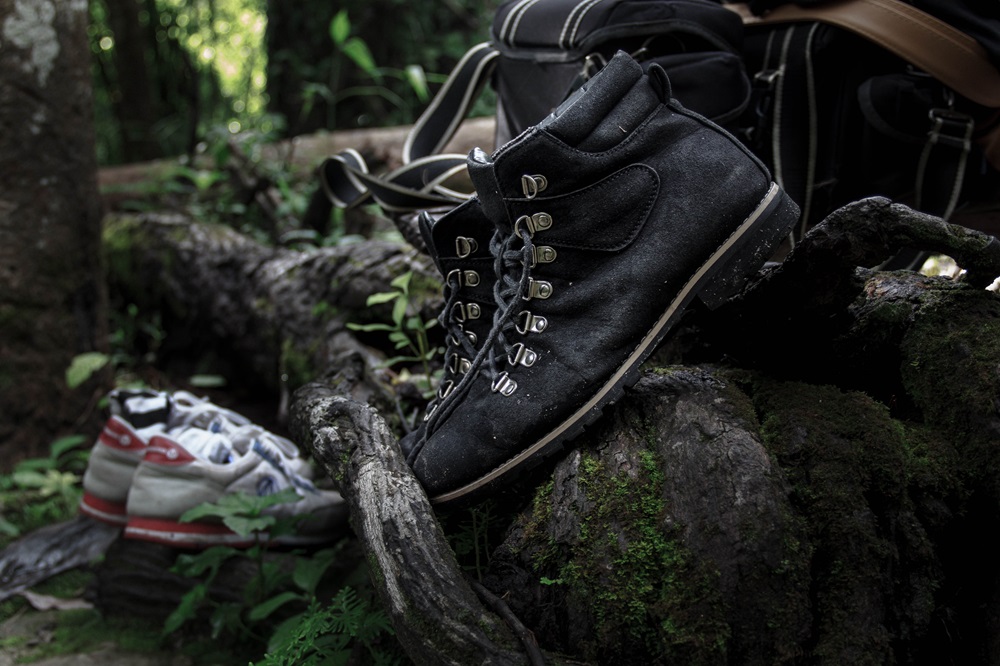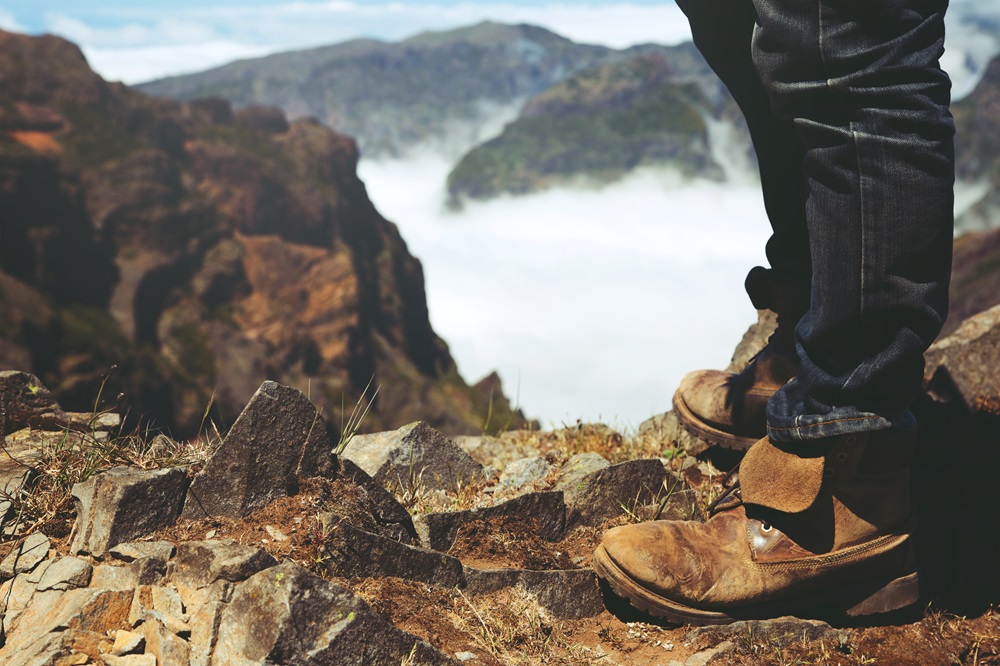When you’re miles from civilization, the last thing you want is wet, uncomfortable clothing slowing you down.
Whether you’re searching for the best hiking boots for men or the perfect hiking shirt, moisture-wicking technology has changed the game for outdoor enthusiasts everywhere.
Moisture-wicking fabrics pull sweat away from your skin and push it to the outer layer of the material where it can evaporate quickly.
This keeps you dry, prevents chafing, and helps maintain your body temperature during long-distance hikes.
How Moisture-Wicking Actually Works
Unlike cotton that absorbs and holds moisture (making it heavy and cold), moisture-wicking fabrics use capillary action – the same process plants use to draw water up from roots.
These special fabrics have tiny channels that move sweat away from your body.
The science is simple but effective: Your body sweats, the fabric pulls the moisture away, and the larger surface area of the outer fabric helps that moisture evaporate faster than it would on your skin.
The Benefits You’ll Feel Immediately
When you wear moisture-wicking gear on your next hike, you’ll notice several improvements right away:
- Less chafing and blisters – Dry skin means less friction
- More consistent body temperature – No more cold, clammy feeling when you stop hiking
- Lighter feeling clothes – Gear doesn’t get weighed down with sweat
- Reduced odor – Many moisture-wicking fabrics include antimicrobial properties
Your feet will thank you most of all when you choose hiking boots with moisture-wicking liners.
Moisture-Wicking Materials Compared
Different materials offer varying benefits for different conditions. Here’s how they stack up:
| Material | Drying Speed | Durability | Best For |
| Polyester | Very Fast | High | Hot weather, intense activity |
| Merino Wool | Medium | Medium | All-season use, odor resistance |
| Nylon | Fast | Very High | Rugged conditions, long-term use |
| Bamboo | Medium | Medium | Sensitive skin, environmental concerns |
Beyond Just Clothing: The Full System Approach
Moisture management isn’t just about your shirt. For true long-distance comfort, you need to think about your entire gear setup.
Your socks matter just as much as your shirt. Wool-synthetic blends often provide the best combination of moisture management and cushioning for hiking socks.
And don’t forget about your pack! The best backpacks now include ventilated back panels that create airflow between the pack and your back, reducing sweat buildup in that often-overlooked area.
The Temperature Regulation Connection
Moisture-wicking technology does more than keep you dry – it’s a key part of regulating your body temperature. When you’re hiking uphill and generating heat, these fabrics help cool you by efficiently managing sweat.
When temperatures drop, staying dry helps prevent the dangerous cooling that wet clothes can cause.
This temperature management is especially important in varying conditions where you might experience both hot and cold temperatures during a single hike.
How To Care For Your Moisture-Wicking Gear?
To keep your gear performing at its best:
- Wash in cold water with mild detergent
- Skip the fabric softener (it clogs the moisture-wicking properties)
- Avoid high heat when drying
Proper care can extend the life of your gear by years, saving you money in the long run.

Real-World Performance
Studies show that hikers wearing moisture-wicking clothing maintain more consistent core temperatures and report greater comfort over long distances.
A 2022 survey of Pacific Crest Trail hikers found that 94% considered moisture management in their clothing essential for preventing blisters and chafing.
The bottom line: Moisture-wicking technology isn’t just a comfort feature – it’s a performance and safety feature for serious hikers.
Making Smart Choices For Your Next Hike
When shopping for moisture-wicking gear, look for:
- Flat or welded seams to prevent chafing
- UPF protection for sun exposure
- Antimicrobial treatments for odor control
- Quick-drying claims backed by specific technology
Whether you’re looking for the best hiking boots for men with moisture-wicking liners or the perfect hiking shirt for summer trails, understanding this technology helps you make smarter choices about the gear you’ll depend on mile after mile.

